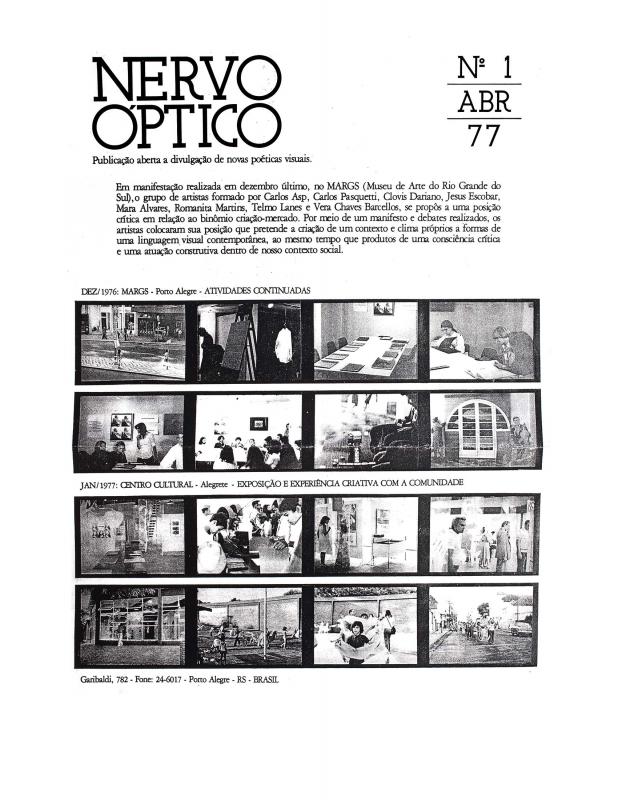As the Boletim explains, the descriptions of the works in the Exposição Manifesto were written “according to the indications of the participants in the event.”Jesús Escobar exhibited a wall covered with Xerox copies conceived as “a critique of traditional printmaking;” Vera Chaves Barcelos installed her silk screens “as a tactile appeal to imagination.” Significantly, the silk-screen technique, along with photographic “appropriations,” was addressed in a theoretical-practical course given by artist Júlio Plaza (1938–2003) in Porto Alegre in June and July of 1971, a course that Vera had attended. In her master’s thesis, historian Ana Maria Carvalho demonstrates that a number of artists from the region assert that courses like that one led to a deep questioning of the nature of art and to breaks with the traditional techniques of artistic expression. The exhibition-manifesto received a great deal of attention from the Porto Alegre press. Roberto Pontual (1939-1992), one of the most important critics of the day, discussed it in his column in the Jornal do Brasil (Rio de Janeiro, December 17, 1976).
The manifesto brought together a group of artists that, starting the next year (1977), would put out a monthly poster called Nervo Óptico, of which thirteen editions were published from April 1977 to September 1978. They would also open up venues essential to debate on contemporary art. For the thirteen posters, see ICAA digital archives doc. no. 1110913 through doc. no. 1110925.
For other publications that discuss the activities of the Nervo Óptico group in detail, see the article “Gravura e Mercado: Os súbitos excessos” by Roberto Pontual published in the Jornal do Brasil, Cuaderno B (Rio de Janeiro, December 1976, p. 2); the books Espaço N.O.: Eventos e Artistas Atuantes 1979-1982 (Rio de Janeiro: FUNARTE, 1982); and Espaço N.O. - Nervo Óptico by Ana Maria Albani de Carvalho (Rio de Janeiro: FUNARTE, 2004).


